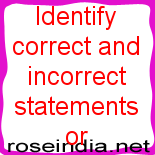An enterprise Bean must not use read/write static fields. Using read-only ( final) static fields is allowed.
An enterprise Bean must not use thread synchronization primitives to synchronize execution of multiple instances.
An enterprise Bean must not use the AWT functionality to attempt to output information to a display, or to input information from a keyboard.
An enterprise bean must not use the java.io package to attempt to access files and directories in the file system.
An enterprise bean must not attempt to listen on a socket, accept connections on a socket, or use a socket for multicast. Enterprise bean instance is allowed be a network socket client.
The enterprise bean must not attempt to use the Reflection API to access information that the security rules of the Java programming language make unavailable.
The enterprise bean must not attempt to create a class loader; obtain the current class loader; set the context class loader; set security manager; create a new security manager; stop the JVM; or change the input, output, and error streams.
The enterprise bean must not attempt to manage threads. The enterprise bean must not attempt to start, stop, suspend, or resume a thread; or to change a thread’s priority or name.
The enterprise bean must not attempt to directly read or write a file descriptor.
The enterprise bean must not attempt to obtain the security policy information for a particular code source.
The enterprise bean must not attempt to load a native library.
The enterprise bean must not attempt to gain access to packages and classes that the usual rules of the Java programming language make unavailable to the enterprise bean.
The enterprise bean must not attempt to define a class in a package.
The enterprise bean must not attempt to pass this as an argument or method result. The enterprise bean must pass the result of SessionContext.getEJBObject(), SessionContext.getEJBLocalObject(), EntityContext.getEJBObject(), or EntityContext.getEJBLocalObject() instead.
Visit http://java.boot.by for the updates.
